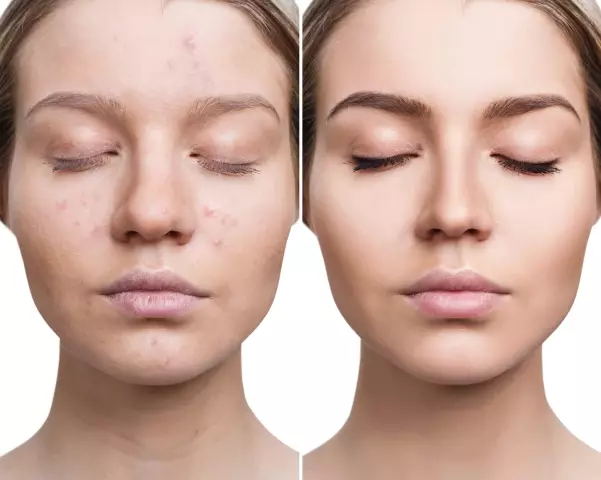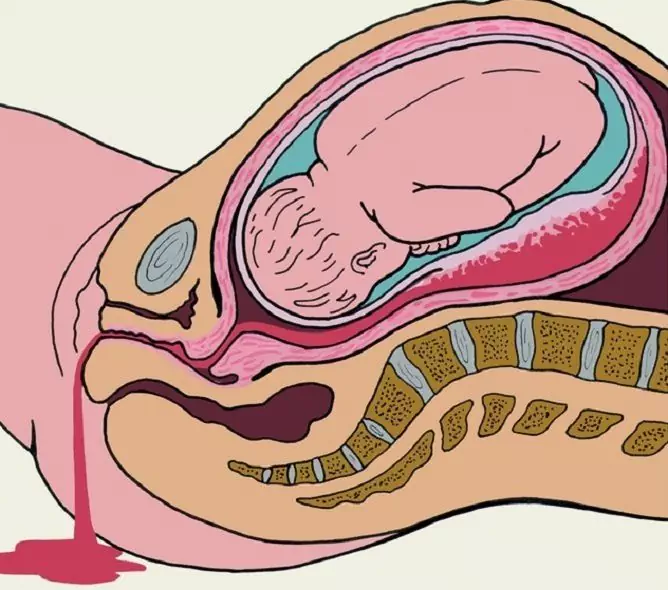- Author Rachel Wainwright [email protected].
- Public 2023-12-15 07:39.
- Last modified 2025-11-02 20:14.
Disgraphia

Violation of the writing process, manifested in a person in persistent repetitive errors caused by unformed higher mental activity, with normal development of intelligence, is called dysgraphia. Depending on which component of mental functions is insufficiently formed, the violation is often accompanied by disorders of oral speech.
Usually, dysgraphia and dyslexia, which is a selective impairment of the ability to master the reading skill, occur simultaneously in children. In rare cases, these disorders occur separately.
If dysgraphia is found in a child, exercises aimed at developing fine motor skills in combination with daily writing of dictations and rewriting of texts can significantly speed up the process of correcting the violation.
Types of dysgraphia
The classification of the violation is based on the lack of formation of a certain mental function or operation of the writing process. Based on this, the following types of violation are distinguished:
- Dysgraphia on the basis of a violation of language analysis and synthesis;
- Articulation-acoustic and optical dysgraphia;
- Agrammatic and Acoustic Dysgraphia;
The mechanism for the formation of articulatory-acoustic dysgraphia is the child's incorrect pronunciation of speech sounds, which he eventually reflects in writing, because he writes words the way he pronounces them. This becomes possible in cases where the child either does not have formed phonetic ideas, or there is a violation of auditory differentiation.
Thus, a baby with articulatory-acoustic dysgraphia records his defective pronunciation in writing, skips or replaces letters. Many speech therapists note that even after correcting the defects in oral speech, some wards continued to write words incorrectly. This is due to the lack of formation of kinesthetic images of sounds; during the internal pronunciation of words, the child does not rely on the correct articulation of sounds.
Articulatory-acoustic dysgraphia mainly affects children with polymorphic impairment of sound pronunciation, especially with rhinolalia, sensory and sensorimotor dyslalia, and dysarthria.
Acoustic diffraction is a violation of phonemic recognition. A child with such a disorder replaces letters in writing, denoting phonetically close sounds, mixes whistling and hissing, deaf and voiced letters.
The emergence of acoustic dysgraphia is associated with inaccurate differentiation of sounds by ear in a child, while maintaining the normal pronunciation of words.
With dysgraphia, based on a violation of language analysis and synthesis, the child writes words, especially prepositions, in one piece, skips vowels and consonants when combined, adds unnecessary letters, and also writes separately prefixes and roots of some other words in a sentence. There is also a distortion of the sound-letter structure of the word, due to the underdevelopment of phonemic analysis.
Agrammatic dysgraphia arises against the background of the unformed lexical and grammatical structure of speech, manifests itself in writing in morphological and morphosyntactic agrammatisms at the level of sentences, text, phrases and words.
Lack of formation of visual-spatial functions leads to the development of optical dysgraphia. The child distortedly reproduces the letters in the letter - writes them in a mirror image, does not add or, on the contrary, ascribes unnecessary elements, replaces and displaces letters that are similar in graphic features. In optic dysgraphia, left-handed people with organic brain damage may have left-to-right writing.
This type of disorder is divided into a literal form, when it is difficult for a child to reproduce isolated letters, and a verbal form, in which the reproduction of isolated letters is preserved.
Dysgraphia reasons
The disease can be caused by genetic factors and unequal development of the cerebral hemispheres. Many cases have been recorded when dysgraphia and dyslexia developed in children whose families speak two languages.
Poor processing of visual information can be a possible cause of the development of the disorder; dysgraphia often occurs in left-handers who have been retrained and began to write with their right hand, as well as in children who went to school before 6 years of age.
Prevention of dysgraphia
To prevent the development of a disorder, it is necessary to stimulate the development of the child's cognitive and mental activity. It is necessary to look for ways to attract and hold the baby's attention, to provide him with a sufficient amount of visual and auditory impressions. To prevent dysgraphia, you can use various educational toys for very young children or games for preschoolers.
Even in the pre-speech period of the child's development, parents need to establish an emotional connection with him in order to subsequently be able to influence the baby and direct his actions in the right direction, develop his memory and stimulate the development of his mental functions.
An important element of the prevention of dysgraphia is the full-fledged development of the oral speech of the crumbs, because later it will become the basis on which written speech will be built.

From an early age, the child needs to be comprehensively developed, paying special attention to his psychomotor and intellectual activity. To correct and prevent dysgraphia, exercises aimed at developing a child's fine motor skills can significantly contribute to the development of those mental functions of the brain that are responsible for speech and writing.
Exercises to prevent dysgraphia should be practiced daily, starting from the very young age of the child - these can be finger games and massages, forming letters from cereals or sticks, drawing, collecting puzzles or cubes on which words are depicted.
So, dysgraphia is called a violation of writing in children, due to the lack of formation of higher mental activity, with the normal development of intelligence. And in order to prevent the occurrence of this disease, it is important to provide the child with a comprehensive development from an early age.
YouTube video related to the article:
The information is generalized and provided for informational purposes only. At the first sign of illness, see your doctor. Self-medication is hazardous to health!






